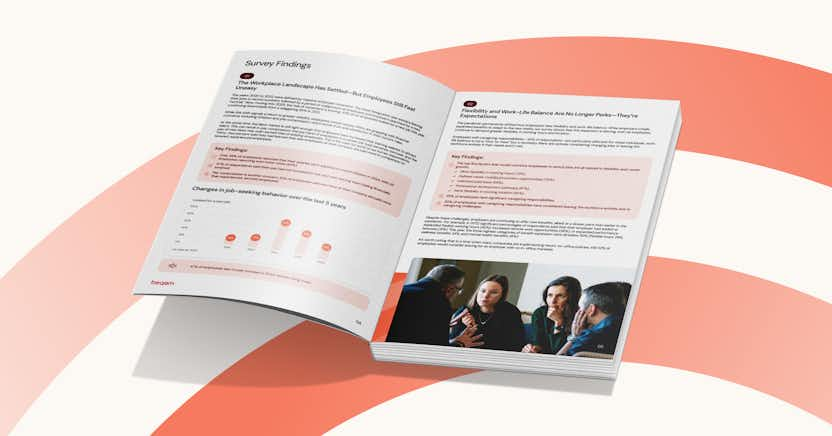Understanding Bonus Plans

Bonus plans are one of the most powerful levers a company has to direct the behavior of employees towards specific goals. They also can be a competitive differentiator to make your company more attractive for recruitment. It is critical that bonus plans, often referred to as variable or short-term incentives, are designed carefully and administered smoothly.
Do you have the tools to create bonus plans that incentivize the right behaviors? Are you able to create and administer plans that will be optimized for different roles and geographies? Can you accurately predict what those plans will cost? Can you ensure they will be executed correctly and efficiently? These capabilities can have a big impact on your company’s success in meeting its goals.
In this installment of our ongoing series, we look at the key elements that go into managing bonus plans successfully, and what is required of a compensation management system.
Getting the pieces in place
Volumes have been written about how to design bonus plans for optimum results, and we won’t pretend to be able to describe all the intricacies in a blog. Our focus here is on what you need to consider when assessing the technology that will be needed to manage bonuses effectively, especially in large organizations.
Structuring the plans
Planning for bonuses is quite a bit different from salary planning, since bonuses typically are driven directly by performance results, and often measured by multiple key performance indicators (KPIs). A simple bonus plan might be based only on company performance during the period, or may even be at the discretion of management. More sophisticated plans may have KPIs that include company, team, and individual components, for example:
- Company goalsrevenue, margin, growth rate, new customer acquisition, customer retention, customer satisfaction, share price, etc
- Team goals related to the nature of the team: issues resolved by customer service, account footprint expansion by sales, leads generated by marketing, product quality measures by manufacturing, etc.
- Individual goals based on the person’s role, perhaps including performance rating, productivity, teamwork, etc.
By mixing these elements, you motivate the employee to accomplish their own specific goals while being a team player and working for the overall success of the company.
Data makes all the difference
When planning your goals, make sure to set targets that you have the data to measure. Will you need to perform any calculations to get the data that you need? Do you have the right tools in place to track your KPIs? How will monitoring those KPIs help you achieve specific objectives?
Calculating an employee’s bonus, then, may require evaluating data from a variety of sources, depending on the metrics being used to determine the bonus payout. It becomes important to identify the sources of information needed to calculate bonuses and to ensure you can pull that data into the compensation system in a usable fashion. So, understanding your data environment is an important part of developing a bonus plan.
Modeling is a must
Bonuses can be used to reward very specific objectives, which will vary based on role, location, and company strategy. Even within one plan, there can be many moving parts: multiple metrics, achievement level for each, company funding level, etc., making it hard to accurately assess what the plan will actually cost. To plan accurately and forecast the true cost of a bonus plan, you must make assumptions and predictions about the achievement of the objectives that drive the payouts. This requires the ability to run simulations using different sets of assumptions—“what-if” scenarios—and see what bonus payments would result from different models, such as optimistic, pessimistic, and realistic.
Multiple plans add complexity but drive results
If you work with a large organization, you may have an additional layer of complexity to consider. The larger the size of the company, the more layered and standardized the bonus system should be to make it simple to scale. And, a company may in fact have many different bonus plans that vary by division, department, location, team, role, title, etc., or one basic plan with many variations such as different percentages assigned to different elements to weight them differently. While having a variety of plans adds another layer of complexity to compensation management, the business results are usually well worth it. Bonus plans that are tailored to a function and market can be highly effective in driving the individual and team behaviors needed to achieve collective success.
The right tools are essential
By now, if any of this information is new to you, creating a structured bonus plan must feel like a daunting task. But it doesn’t have to be with the right software. The problem that most companies face is their reliance on spreadsheets or basic HR software that can’t do what they need. Managing many bonus plans with multiple KPIs that require gathering and analyzing data from across the company can easily outrun the capabilities of these makeshift solutions. With the right compensation management system, however, the payoff in performance can be well worth it. For example, some beqom customers have upwards of 100 bonus plans, precision-tooled to drive results.
Don’t forget Finance
Accruals, accruals, accruals. Because the total bonus amount can be a large but variable figure, it is important for planning purposes to forecast bonus payouts as accurately as possible. This is an accounting necessity, as Finance must accrue for bonuses in its financial reporting.
Key system capabilities for plan development
To get the most out of your bonus programs, here are some of the capabilities to look for in your compensation technology. Your system should be able to:
- Manage multiple bonus plans and/or variations of plans
- Calculate and track any number of KPIs to enable metric-driven plans
- Model and simulate different plans to see the impact
- Manage the data needed to calculate KPI attainment
- Provide the ability to accurately forecast variable pay accruals
Ok, I've got my bonus plan. Now what?
The best-designed plan is meaningless unless it can be executed smoothly and accurately. Like salary reviews, the process of administering a bonus typically entails managers allocating bonus amounts to team members from a pool of money. If the company has KPI-driven plans and an automated compensation system, the system may automatically propose bonus amounts based on predefined business rules and the metrics data.
Also like salary reviews, the amounts allocated by managers must go through an approval process based on a predefined hierarchy of approvers. At each step, the amount can be validated, rejected, or modified, and an explanation given. The process should be traceable through an audit trail. This is useful for compliance with Sarbanes-Oxley and other regulations which require accountability and transparency around compensation decisions.
Key capabilities for administering bonus plans
For success in administering your bonus plans, here are some additional capabilities to look for in your compensation management solution:
- Manager self-service to participate in the bonus allocation process
- Availability to managers of metrics and calculations used to calculate team bonuses
- Ability to adjust proposed amounts
- Ability to see total compensation and history for each team member
- Visibility of budget and ease of allocating the budget pool
- Flexible approval hierarchies to match the way the organization operates
Bonus success
Variable incentive plans can be the engine that drives company performance. The right compensation management technology can help you to design and deliver bonus plans that deliver results.
If any terms in this article are unfamiliar to you, don’t worry. We have a resource that will help you navigate this and other compensation management terminology. Bookmark our Compensation Glossary or download a copy to access it offline.
















